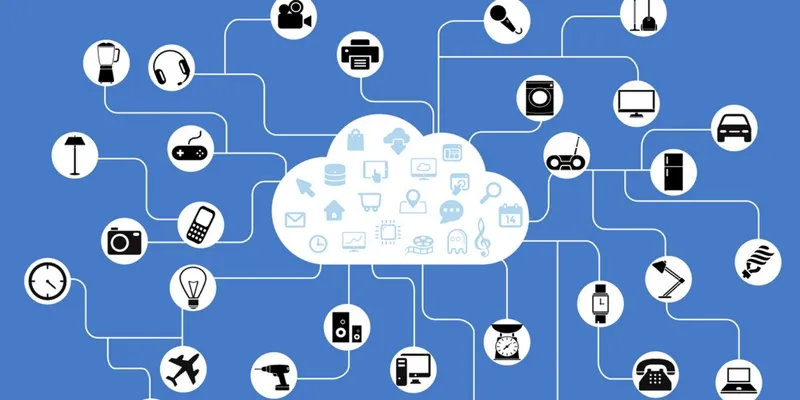Why entrepreneurs should join Infosys, Wipro, Oracle, Dell to grab a piece of the edge computing pie
Edge computing, a method where local sensors gather and crunch data at the source, is gaining momentum and could soon be the Next Big Thing. In this, data is processed as close to the source as possible - the edge of the network - instead of in a central data-storage warehouse. So what's driving it? Mobile computing, the overwhelming number of networked devices courtesy the Internet of Things (IoT), and the falling cost of computer components are key catalysts.
Edge computing today is viewed as a far more efficient and practical way to process data where it is collected.
Say you enter a retail shop. The shop knows, through a sensor, that a person is standing in a particular aisle. If the person has connected his phone to the shop’s network, the store can immediately crunch offers for the person locally. This computing method - at source - is called the “edge”, meaning data does not have to go to a central location, say a data centre, and be beamed back.
The store network can then use facial recognition, heat maps, and communication protocols like Bluetooth, Wifi and Zigbee to find the customer. The smartphone is central to communication in a retail context.

Or one could take the connected car or the level 4 autonomous driving example. The amount of data a smart city will generate per million people will be 200 petabytes a day. Assuming that the autonomous cars will be in the market by 2020, they will generate 4TB of data per day; these data points cannot be crunched with current networks.
Closer home, Indian IT services players are invested in a future, heavy on edge computing. A few years ago, the $10.5 billion IT services giant Infosys began to rediscover its edge. It all began in 2012 under SD Shibulal, the Co-founder of Infosys who saw the importance of cloud-based business offerings over the traditional IT service business. His successor, Vishal Sikka, brought in a new approach to design thinking and set a roadmap towards building AI-based business models. To achieve this, the company began to invest in a platform-based approach to its business. Even until 2016, less than 15 percent of Infosys’s revenues were coming from cloud-based businesses for the IT bellwether and the IT Industry. With the proliferation of cloud-based businesses over the years, Infosys had to invest in IoT and AI to stay relevant. As it solved the complexities of AI and IoT, the company began to realise that with the combination of a proliferation of devices, and local sensors computing data at source and AI, the era of edge computing had arrived.
But in a country like India, delivery of such services will be crucial. Mohandas Pai, founder of Aarin Capital, says,
“Just offering WiFi is not enough. Citizens need good information and services delivered in every city in India. We have to do this with a view to bettering the lives of citizens when it comes to accessing information and services.”
Securing the data is equally important. The Indian government has earmarked Rs 98,000 crore for Smart cities. The government has selected 99 cities and has even created a road map of a public-private partnership that will be commercial.
Thomas Kurian, President for Product Development at Oracle, says:
“Solutions like securing edge devices from attacks will be big, where we will ensure that the application layer runs fine.”
According to GE Digital, in the context of Industrial IoT, “edge” refers to the computing infrastructure that exists close to the sources of data, for example, industrial machines (wind turbine, magnetic resonance (MR) scanner, and undersea blowout preventers), industrial controllers such as SCADA systems, and time series databases aggregating data from a variety of equipment and sensors. These devices typically reside away from the central computing available in the cloud.
A source from Infosys, says: “It is only when enterprises gain complete control over their data that they will be able to glean deeper insights.” Infosys substantiates in its blog that organisations need to take more control over data. For example, the temperature of a turbine would be relevant to turbine manufacturers, the user, the supply chain network, and the regulator, but unless this data is made accessible to relevant stakeholders, they will not be able to extract the insights it has to offer.
All this data from turbines can be computed at source, and analysed to manage the machine, with AI, and help the site operator. This data need not go all the way to a centralised computing cloud.
Speeding up things
The signs of edge computing are already big at IISc. Mymo Wireless, an IISc incubated startup, is building 5G chips built on long-term evolution (LTE) for the Indian market. These chips will provide speeds up to 20 gigabits per second at telecom bay stations, which means the ordinary citizen will not need Bluetooth or Wifi to access services. With such fast computing, devices closer to the consumer will not depend on central compute locations to analyse data. All data will be crunched locally and fast.
Madhan Sondur, founder and CEO of Mymo Wireless, says:
“From an Indian context, low-cost 5G chips can change the ecosystem with faster sharing of data and services.”
No wonder edge computing is big business for IT services businesses.
Growing market size
According to a new market research report, Edge Computing Market by Component (Hardware, Platform, Solutions), Application (Smart Cities, Location Services, Analytics, Augmented Reality), Organization Size (SME, Large Enterprises), Vertical, and Region - Global Forecast to 2022, published by MarketsandMarkets, the market size is expected to grow from US$1.47 Billion in 2017 to US$6.72 Billion by 2022, at a Compound Annual Growth Rate (CAGR) of 35.4 percent during the forecast period.
In a white paper presented by the $9 billion Wipro, enterprises are evaluating edge computing architectures that can make a new breed of smart mobility devices (smartphones, wearables, sensor-mounted devices also known as edge computing devices) that can intelligently leverage data.
Cognitive capabilities
In the edge computing world, these devices become intelligent and potentially capable of having cognitive capabilities to perform tasks that have traditionally needed human brain power.
Every Infosys customer, be it Dell or Oracle, is betting on it. Why? Enterprises will crunch data on their customers by gathering data from these edge devices.
The emergence of new technologies makes it hard to keep pace, but IT organisations are awaiting the arrival of 5G because it will change the world and the way it interacts with data.
Michael Dell, Founder and CEO of Dell Technologies, says:
“Think about the compute capacity needed in the car. You need local storage and compute in a connected car because it is constantly making instant decisions. You cannot let data travel in and out of the car all the time. We are super excited about 5G and its going to be amazing to usher in this new era of connecting everything.”

The huge opportunity
According to IDC, $2.1 trillion will be spent on IT in 2021; by end of 2018, $1.8 billion will be spent on digital transformation.
“By this time frame, 50 percent of the world’s GDP will be impacted by digital relationships,” says Frank Gens, Chief Analyst at IDC. He says the world is in the second phase of the cloud revolution, which is about using data to build innovative business models through digital services.
Large companies like Yamaha Motor Corporation are investing in data-led services and want to use AI-ML to deliver services to their customers.
Glen Coles, CIO of Yamaha Motor Corporation US, says: “Targeting customers at dealerships by understanding their love for biking through parts purchases that they have made in the past is a reality. We are experimenting with technologies like Blockchain and augmented reality to enhance customer experience.”
Even the city of Las Vegas wants to use edge computing to serve travellers better when they arrive in the city.
Michael Lee Sherwood, CIO of the City of Las Vegas, USA, says: “We work with several IT services to collect data and serve real-time services to citizens and tourists in the city of Las Vegas. We are already experimenting with driverless taxis and bus services.”

Take away
Edge computing is a great opportunity for startups to work with manufacturing, retail and FMCG companies to enable their digital transformation. It collects so much data that enables enterprises to get closer to customers. The venture capital community is keenly watching this space and has invested in companies like 75F, Smarter Homes, Petasense and Integration Wizards.
So what are you startups waiting for? Push yourself to the Edge.







